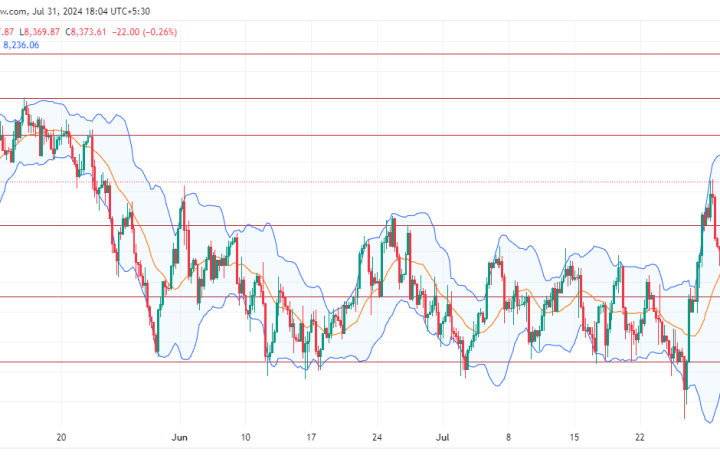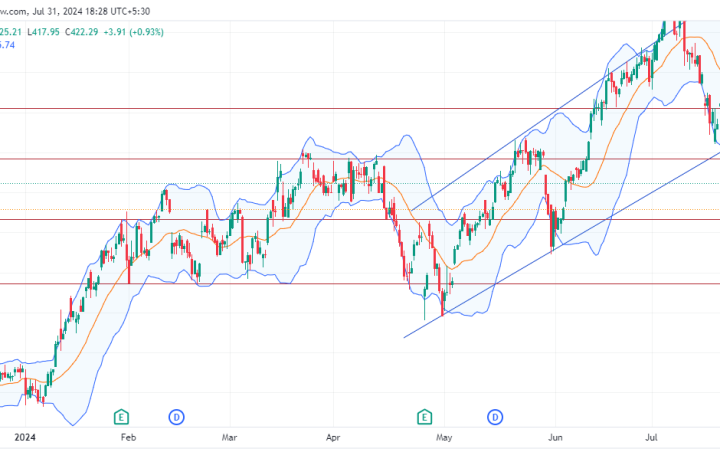
In the wake of Microsoft’s fiscal fourth-quarter earnings report, Wall Street’s reaction was mixed, reflecting a divide between bullish optimism and cautious skepticism.
The tech giant reported earnings per share of $2.95, slightly above expectations, and revenue of $64.7 billion, marking a 15.1% increase year-over-year.
What do the analysts say?
On one hand, Wedbush Securities analyst Dan Ives maintained an Outperform rating and a $550 price target on Microsoft, praising the company’s conference call as a “validation” for AI monetization trends, particularly with Azure expected to accelerate growth in the latter half of the year.
Ives highlighted Microsoft’s strong commercial bookings and Azure’s robust baseline growth as key indicators of sustained momentum.
Conversely, Citi analyst Tyler Radke offered a more measured perspective, acknowledging a “skinny revenue/EPS beat” while pointing out a slowdown in Azure’s growth and weaker-than-expected guidance for the next quarter.
Despite these concerns, Radke remained optimistic about the AI and commercial bookings growth, maintaining a Buy rating but slightly reducing his price target to $500 from $520.
Radke suggested that the near-term estimate revisions might be negative, yet he believed any weakness would be transient, bolstered by solid leading indicators.
Bank of America’s Brad Sills also projected a positive outlook, particularly noting that Azure’s expected second-half acceleration indicates that any current softness should be short-lived.
Sills emphasized the strength of Microsoft’s AI services on Azure and the company’s ability to leverage its platform to mitigate capital expenditure pressures.
His updated capital expenditure forecast for fiscal 2025 rose to $58.3 billion from $53.8 billion, reflecting anticipated revenue growth and platform scalability.
KeyBanc Capital Markets analyst Jackson Ader focused on Azure’s current capacity constraints and significant capital expenditure, suggesting that while these might pose challenges, they also provide Microsoft with flexibility to manage its growth trajectory effectively.
Ader reiterated an Overweight rating and a $490 price target, optimistic about Microsoft’s potential to manage spending effectively as it scales.
Q2 earnings in detail
Microsoft’s performance in Q4 FY2024 paints a complex picture of a tech behemoth navigating the choppy waters of rapid innovation and expansive growth amid heightened market expectations.
Driving Microsoft’s growth is its diversified business model, with significant contributions from its Productivity and Business Processes, Intelligent Cloud, and More Personal Computing segments.
Notably, the Intelligent Cloud segment, which includes the Azure cloud platform, reported a 21% year-over-year growth, albeit slightly below expectations.
Azure’s growth, while still impressive at 29% year-over-year, has shown signs of deceleration from previous quarters.
Despite this, Azure remains a cornerstone of Microsoft’s growth strategy, particularly as the company continues to integrate AI capabilities across its offerings.
Financially, Microsoft remains a powerhouse, generating $37.2 billion in cash flow from operations and $23.3 billion in free cash flow during Q4.
The company’s disciplined approach to capital return is evident in its $8.4 billion distribution to shareholders through dividends and share repurchases.
However, a closer look reveals a narrowing gap between revenue growth and operating expenses, sparking some concern about future margin expansions. Nevertheless, the management’s guidance for FY2025 suggests confidence, projecting double-digit revenue growth against a backdrop of single-digit growth in operating expenses.
Microsoft’s elevated valuation
Valuation-wise, Microsoft’s forward P/E ratio stands at 35.39, slightly above its five-year average and the sector median.
This elevated valuation reflects the market’s high expectations, particularly in terms of growth and innovation in cloud computing and AI technologies.
The company’s strategic investments in these areas, including a significant increase in CAPEX spending, are aimed at boosting long-term growth but also present risks if the anticipated returns on these investments lag.
Despite these strong financials, Microsoft’s stock reacted negatively in pre-market trading today, dropping over 3%.
This dip likely reflects the market’s high expectations and concerns over future growth sustainability amidst aggressive capital spending.
Microsoft’s guidance for the upcoming quarter was also cautious, projecting first-quarter revenue to be between $63.8 billion and $64.8 billion, slightly below the analysts’ expectations.
Having delved into Microsoft’s Q4 earnings and analysts’ views, we must now pivot to a technical analysis of its stock performance.
This analysis will delve into recent price movements, and trading volumes all of which are crucial for answering the pressing question faced by investors: Given the mixed views from Wall Street following Microsoft’s Q4 earnings, should one sell their holdings or see this as an opportunity to buy more?
Is the long-term rally over?
Microsoft’s stock has seen a strong uptrend since the start of 2023, doubling in price from that time.
However, this strong uptrend seems to be coming to an end with the stock dropping over 10% from the all-time highs it made earlier this month.
Moreover, the stock is poised to open today below its long-term bullish trendline as can be seen in the daily chart below.
MSFT chart by TradingView
Considering that bulls should become cautious as the next support for the stock lies near $388, falling below which the stock can enter a downtrend or period of medium-term range bound movement.
Any bullish position should only be considered if the stock bounces back and closes above its 50-day moving average, which currently is far away at $439.0
Bearish traders can make use of this shift in momentum to short the stock but must analyze how the stock behaves after opening today.
If the stock falls further after opening that will suggest a major sentiment change and they can short the stock with a stop loss at $432 and an initial profit target of $388.
The post Wall Street has mixed views on Microsoft after Q4 earnings: Should you sell or buy more? appeared first on Invezz




More Stories
Long UK100: bullish momentum fueled by strong corporate earnings and positive market sentiment
Short MSFT: break of trend support and disappointing azure revenue signal near-term downtrend potential
Boeing appoints aerospace veteran Kelly Ortberg as new CEO